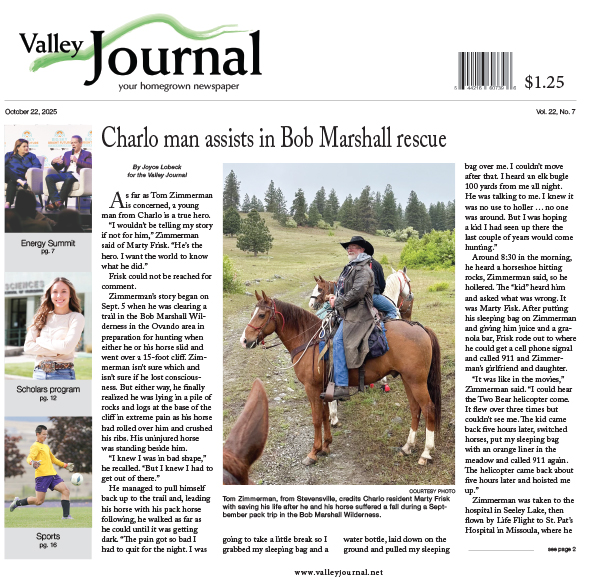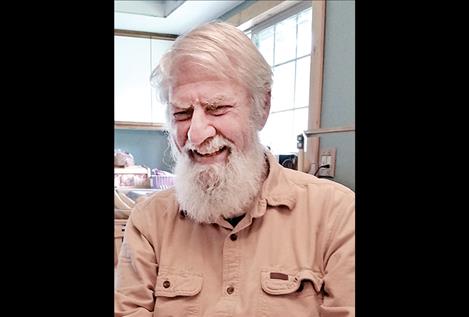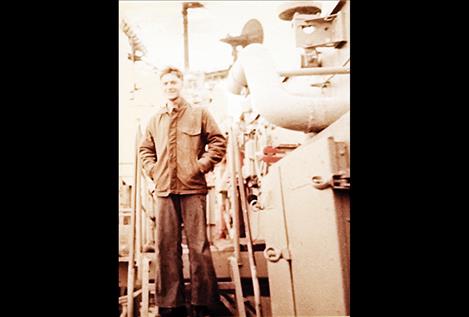Veteran Spotlight
Chris Dawson Oct. 21, 1946 Vietnam - Seaman E3 U.S. Navy – USS Hornet CVS-12
Hey savvy news reader! Thanks for choosing local.
You are now reading
2 of 3 free articles.
Chris Dawson’s decision to join the military was pretty easy. The Los Angeles, California, judge gave him three days to decide: either join up or put on handcuffs. He joined the Navy.
On Feb. 14, 1965, Chris was sent to the San Diego, California, Naval Training Center, unit 143 for 12 weeks. Basic training is generic: learn to march, become proficient with firearms and submit to rules. Every day, he had to wash his clothes and shave. He started with peach fuzz and soon had a beard. When he went for testing, it was discovered he was no dummy. He was sent to school for computers, electronics and radio in Vallejo, California, for about six months and later completed a school for radar trouble shooting.
Chris was assigned to the USS Hornet CVS-12 (carrier vehicle anti-submarine ship) in Long Beach, California. The carrier was in dry dock for about five weeks before sailing. Chris painted, cleaned and scrubbed the carrier and then repeated the process.
He served three tours deployed off the coast of Vietnam in the South China Sea. The ship camped off the coast where its helicopters, fighters and anti-submarine planes could keep the rest of the fleet safe. The fleet consisted of aircraft carriers, cruisers, frigates and destroyers. All of these ships were supported by numerous supply vessels while the Hornet was on station. Part of the ship’s mission was coastal interdiction to slow ammo transport.
Chris experienced five monsoons, periods of weather that include heavy rain and high wind. He was never seasick, even in the monsoons, except for one embarrassing time coming through gentle swells into San Diego.
Four times, the ship went north to the Sea of Japan to the 100-mile marker, near Vladivostok, Russia, before heading into the South China Sea. Chris doesn’t know the reason for these maneuvers other than to tweak the Russian’s noses, which sometimes resulted in a visit by the Russian Air Force. One time, the ship suddenly increased speed from 12 knots to 32 knots, flank speed, and headed 180 degrees (straight south) with no zigzag pattern, which was never done. There were about 100 Russian aircraft coming to “play.”
Between deployments, the ship would go back to San Diego to drop off the “air wings” (Navy pilots) and lots of other stuff. The helicopters left the ship before it got into port. The next four months were spent at Long Beach for repairs. The ship’s coating would be stripped down to the metal. The build up of paint would be fuel if the ship were bombed.
The Hornet was deployed north of Hawaii for a time where the mission was to listen with sonar to Russian subs in international waters. It was a sort of game. One time, the admiral ordered the ship to stop, which was never done. Men were advised, if off duty, to get their cameras and go on deck to see something they’d never see again. Suddenly, there appeared, like in the movie “The Hunt for the Red October,” a Russian red-star attack submarine rising out of the ocean. The Hornet sent over a helicopter with a gurney, and a Russian sailor was loaded on and brought back to the ship. He needed appendix surgery, and the Hornet had the U.S. fleet’s hospital. After surgery, the Russian was sent back to his sub. He was an enemy, but this was the humanitarian side of the Navy. All mariners need to care for fellow Mariners regardless of their flag.
Toward the end of Chris’s enlistment, he took the advice of Red Adams, who was a senior chief petty officer, pinochle player and friend, to put in for an early out to go to school. On July 20, 1967, he was flown to Clark AFB in the Philippines and from there to Hamilton AFB, California. He used the GI bill to partially fund undergraduate work. To save one year of eligibility, he completed the four-year program in three years and put the remaining year toward completion of law school.
After ultimately deciding not to continue as an attorney, Chris is now considering putting his legal training to use with a class-action lawsuit for flight deck workers. Many were in contact with Agent Orange through exposure to the waters used to wash off returning aircraft on the ship’s deck. Chris has about six symptoms of Agent Orange contamination but has been ruled ineligible for disability compensation. Agent Orange has now been found to affect second- generation descendants of those originally in contact with it, including several of Chris’s family.
Chris thinks: if you want to be a “wuss” for the rest of your life with only an iPod for company, then don’t join the military. But if you want to see and experience something life changing for the better, then join. It’s a hard, yes, but you learn to be an adult; you learn discipline, self control and gain self esteem. You can use educational benefits for trade school as well as academic schooling. He thinks it’s good for both men and women, although as far as serving together in the close confines of a submarine or aircraft carrier, the answer is no.
What was the most important outcome of Chris’s service time? At 19 and a half, he felt: “I am a jackass.” He thought his superiors were jackasses, and his country was acting shamefully. Feeling life wasn’t worth living, he flicked his last cigarette over the railing and prepared to follow it. Then he heard the Lord’s voice saying, “You’ve tried everything else, try Me.” And he did. Throughout his remaining time onboard the ship, Red Adams and the Lord delivered him from several sticky situations.
Chris earned the National Defense Service Medal, two Vietnam Service Medals and the Vietnam Campaign Medal w/Device.
Thank you for your service, Chris.


















